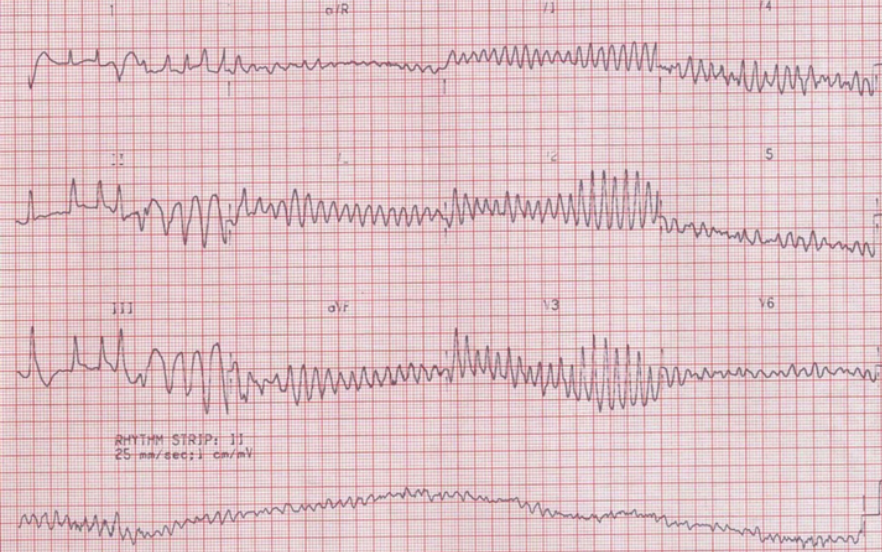ACLS Principles Quiz 2
Quiz Summary
0 of 10 questions completed
Questions:
- 1
- 2
- 3
- 4
- 5
- 6
- 7
- 8
- 9
- 10
The results of your practice test are waiting! Just fill in your email address in the box below, and we will share your results. You’ll only need to enter your email one time. After taking your next practice exam, you’ll receive your results as soon as you click on “Submit.”
Once you pass five practice tests, a 20% discount coupon will immediately be sent to the email address you provided.
|
You must specify an email address. |
You have already completed the quiz before. Hence you can not start it again.
Quiz is loading…
You must sign in or sign up to start the quiz.
You must first complete the following:
Results
Time has elapsed
Try Again. You didn’t get a passing score.Congratulations! You Passed.
You got 0 out of 0 correct and scored 0. Review your incorrect answers and try again.
Earned Point(s): 0 of 0, (0)
0 Essay(s) Pending (Possible Point(s): 0)
Categories
- Not categorized 0%
Earn a 20% Discount on Your Next Certification Course!
ACLScertification.org is proud to offer a 20% discount to students who successfully pass 5 of our practice tests in one sitting. Currently, you have passed 0 of the 5 required tests. Start testing your skills and earning your discount now in our Practice Exam Section.
- 1
- 2
- 3
- 4
- 5
- 6
- 7
- 8
- 9
- 10
- Answered
- Review
-
Question 1 of 10
1. Question
1. A 55-year-old man with cardiac arrest in asystole is being resuscitated for about 15 minutes. Your team decides to perform the rhythm check and record the following:

You check the pulse and feel none. You record the following vital signs: HR = 0 bpm, BP = 0 mm Hg. What is your next course of action?
CorrectIncorrect -
Question 2 of 10
2. Question
2. A 59-year-old man is brought to the emergency department unconscious and not breathing. An ECG shows the following tracing. What is your interpretation of the ECG finding?
 CorrectIncorrect
CorrectIncorrect -
Question 3 of 10
3. Question
3. A 60-year-old man with stage IV lung cancer is being resuscitated in the emergency department. He is in cardiac arrest with pulseless electrical activity. After 2 minutes of high-quality CPR, the team performs a rhythm check and records the following ECG tracing:

The patient has no pulse and is not breathing. What is the next treatment of choice?
CorrectIncorrect -
Question 4 of 10
4. Question
4. A 65-year-old man complains of chest pain and soon becomes unresponsive. EMS has been called and is in transit. No pulse or spontaneous breathing is detected. What is the next correct step?
CorrectIncorrect -
Question 5 of 10
5. Question
5. A 65-year-old man is brought to the emergency department allegedly due to a heart attack. The patient is unconscious with no pulse and not breathing spontaneously. The following ECG tracing was recorded:

What is the interpretation of this ECG finding?
CorrectIncorrect -
Question 6 of 10
6. Question
6. Your team is treating a patient that is pulseless and occasionally gasping. You are assigned the monitor/defibrillator role and have hooked the patient to a defibrillator. The monitor shows a flatline rhythm. In your role, what is the next course of action?
CorrectIncorrect -
Question 7 of 10
7. Question
7. A cardiac arrest patient has been successfully intubated. During CPR with an advanced airway, the provider must deliver 1 breath every:
CorrectIncorrect -
Question 8 of 10
8. Question
8. A cardiac arrest patient is brought by EMS to your emergency department for further management. He sustained electrical shock injuries after being hit by lightning in the fields where he farms apples. You record the following ECG tracing:

What is your interpretation of this ECG finding?
CorrectIncorrect -
Question 9 of 10
9. Question
9. A cardiac arrest patient’s rhythm strip shows the following ECG tracing:

What is the definitive treatment for this patient?
CorrectIncorrect -
Question 10 of 10
10. Question
10. A critically ill patient shows the following ECG tracing:

What is the first course of action in this case?
CorrectIncorrect